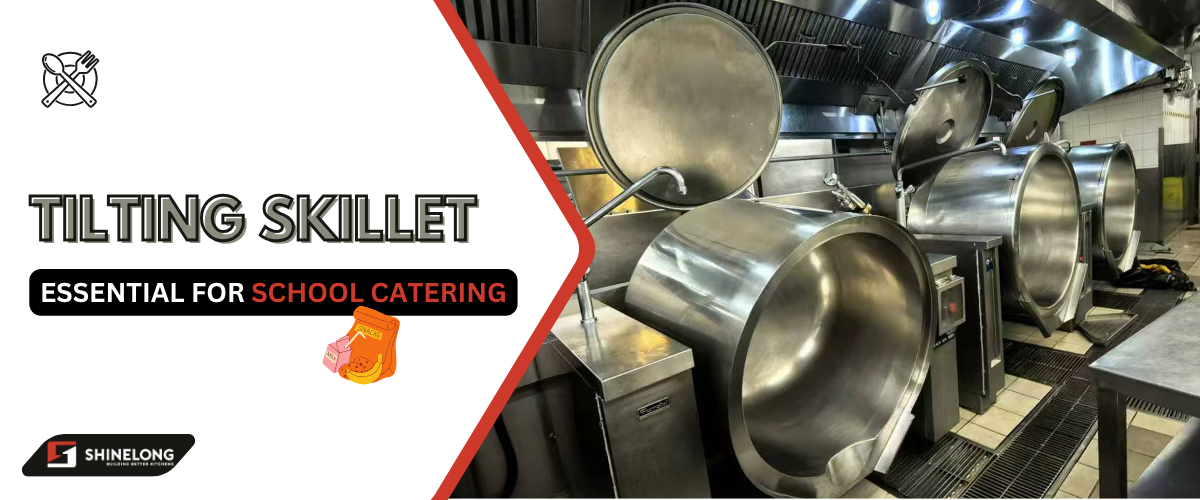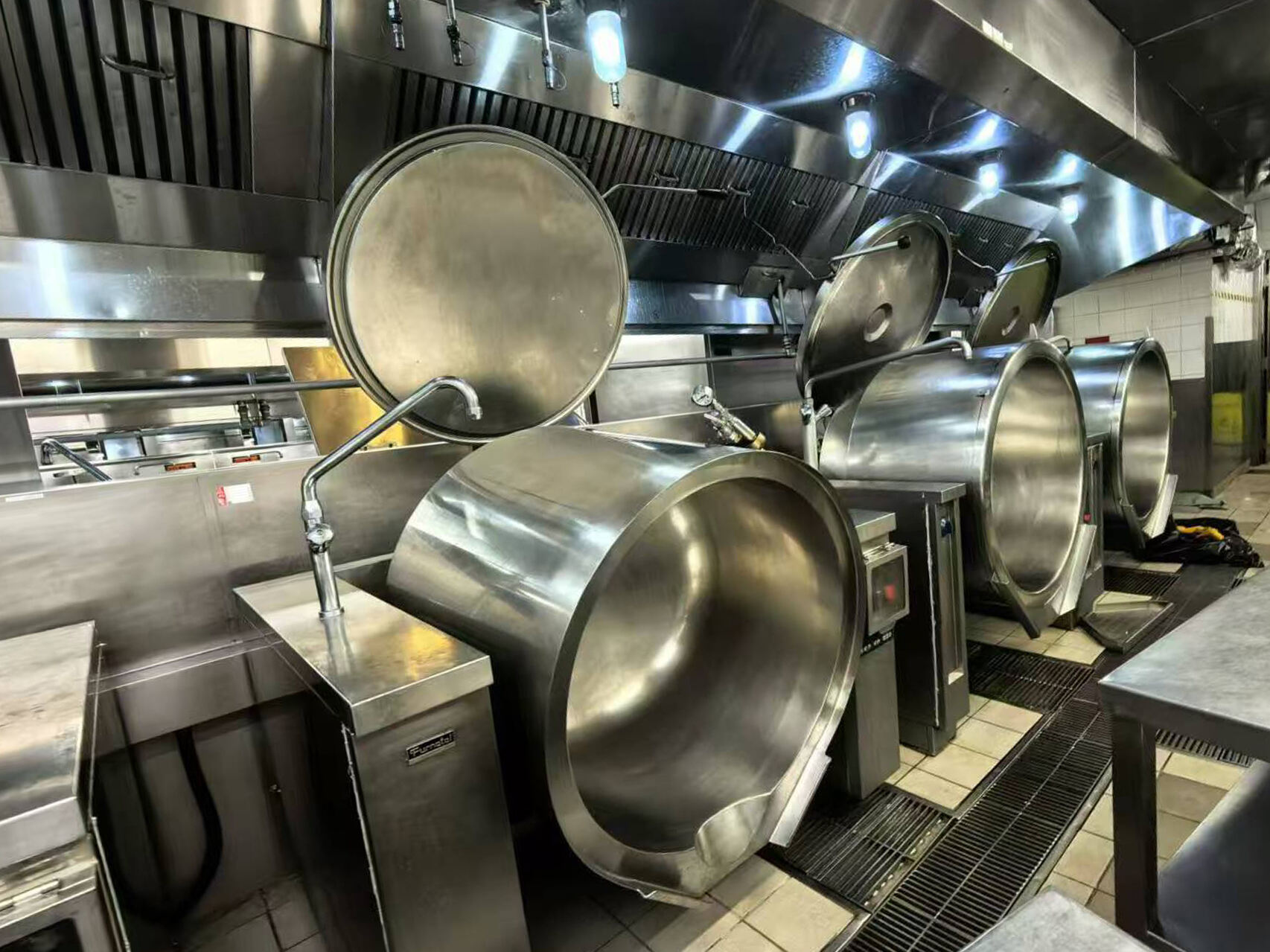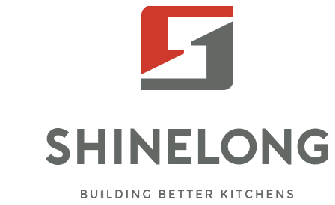خبریں
اسکول کی کیٹرنگ کے لیے جھکنے والا اسکیلیٹ کیوں ضروری ہے

وقت پر بڑی تعداد میں گروپس کو کھانا فراہم کرتے ہوئے مسلسل مزہ، کارکردگی اور غذائی حفاظت کو برقرار رکھنا کیسے ممکن ہے؟ جب سینکڑوں بھوکے طلباء کیفیٹیریا میں داخل ہوتے ہیں، تو یہ کچن کی پِچھلی ٹیم کے لیے ایک حقیقی امتحان ہوتا ہے۔ ایک اسکول کا کچن ریستوران کے کچن سے بالکل مختلف ہوتا ہے؛ ہم بنیادی خیالات جیسے فعل، منصوبہ بندی یا جگہ کی بات نہیں کر رہے۔ حقیقی فرق وہ ہے باورچی خانے کا سامان ۔ یہیں پر جھکنے والا اسکیلیٹ کام آتا ہے، جو شیف کو متعدد کاموں اور بڑے پیمانے پر کھانا تیار کرنے میں مدد دیتا ہے۔
جھکنے والا اسکیلیٹ کیا ہے؟
A ٹلٹنگ اسکلیٹ (یا برازنگ پین) ایک کثیر المقاصد پکانے کا آلات ہے جو زیادہ مقدار میں کھانا تیار کرنے کے لیے بنایا گیا ہے۔ یہ ایک ہی آلات میں سکلیٹ، گریڈل، کیتلی اور اسٹیمر کی صلاحیت کو جمع کرتا ہے۔ صنعتی معیار کے سٹین لیس سٹیل، جیسے 304، سے تیار کردہ، یہ سوپ سے لے کر بخاراتی چاول تک ہر چیز پکا سکتا ہے جبکہ یکساں حرارت کی تقسیم برقرار رکھتا ہے۔ ایک جھکاؤ والے میکنزم سے لیس، یہ عملے کو کھانا کسی برتن یا سرو کرنے والے برتن میں محفوظ طریقے سے انڈیلنے یا پھسلانے کی اجازت دیتا ہے۔
بنیادی پینز سے جدید ٹیکنالوجی والی سکلیٹس تک کا ارتقاء
جھکنے والی سکلیٹ عام کھلی شعلہ والی پینز سے بجلی اور گیس سے چلنے والی کثیر الوظائف یونٹس میں تبدیل ہوئی۔ جدید ماڈلز میں موٹرائزڈ جھکاؤ، ڈیجیٹل کنٹرولز، عایق ساخت اور حفاظتی انٹرلاکس شامل ہیں، وہ خصوصیات جو اس وقت اہم ہوتی ہیں جب عملہ اور بجٹ دونوں محدود ہوں۔
جھکنے والی سکلیٹ کو ناقابل فراموش بنانے والی کیا چیز ہے؟
زیادہ گنجائش اور جگہ کی موثریت
ایک کمرشل جھکنے والی سکلیٹ ایک وقت میں 150 لیٹر تک کھانا تیار کر سکتی ہے۔ ایک عام کے -12 اسکول سوں طلباء کی خدمت کرتے ہوئے، اس کا مطلب ہے کہ متعدد برتنوں یا پین کے استعمال کے بغیر ریکارڈ وقت میں پاستا، سٹیوز، یا انڈے فرائی تیار کرنا۔
آل ان ون ڈیزائن قیمتی کاؤنٹر کی جگہ بھی بچاتا ہے۔ بجلی کے ککرنگ رینج جیسے کئی آلات کو الگ الگ استعمال کرنے کے بجائے، ایک واحد ٹِلٹ اسکِلیٹ دن بھر کا غذائی مینو تقریباً پورا نمٹا سکتا ہے۔
اسکِلیٹ کے سب سے موثر حصوں میں سے ایک ہے اس کا کھانا منتقل کرنے کا طریقہ کار تصور کریں کہ آپ نے 150 لیٹر سے زائد گرم کھانا تیار کر لیا ہے؛ دستی محنت کے ذریعے اتنی مقدار میں کھانا منتقل کرنا وقت طلب اور خطرناک دونوں ہے۔ کھانے کو محفوظ طریقے سے منتقل کرنے کے لیے ٹِلٹ میکنزم بہترین حل ہے۔
کثیرالجہتی: صرف ایک بریزنگ پین سے کہیں زیادہ
واحد مقصد والے آلات کے برعکس، ایک ٹِلٹنگ اسکِلیٹ کئی پکانے کی تکنیکوں :
- گوشت اور سبزیوں کو دھیرے سے پکانا اور بھوننا
- سوپ یا ساس کو ابالنا اور ہلکے ہلکے تڑتڑانا
- بڑی مقدار میں یکساں طریقے سے تلنا اور مینڈھنا
- بخارات سے پکانا اور نرمی سے پکانا، درستگی کے ساتھ
یہ ورسٹائل صرف اسکولوں کے لیے ہی مثالی نہیں بلکہ ہسپتالوں، عوامی اداروں اور کیٹرنگ خدمات کے لیے بھی مناسب بناتا ہے۔
دائمی Stainless-Steel تعمیر
صنعتی آشپاز خانے مضبوطی کا تقاضا کرتے ہیں۔ ٹِلٹ اسکِلیٹ کی سٹین لیس سٹیل کی تعمیر طویل عمر، آسان صفائی اور خوردگی کے خلاف مزاحمت کو یقینی بناتی ہے۔ بہت سے ماڈلز مضبوط ڈھکن، پالش شدہ اندر کے حصے اور حفاظتی لاکس پر مشتمل ہوتے ہیں جو مسلسل استعمال کے سالوں کو برداشت کرنے کے لیے ڈیزائن کیے گئے ہوتے ہیں۔
تجارتی ٹِلٹ اسکِلیٹ کی ضرورت کیوں ہوتی ہے تعلیمی سہولیات کے آشپاز خانے میں
بڑی مقدار میں پکانے میں مسلسل اور تیز رفتاری
جب سینکڑوں کھانے تیار کیے جا رہے ہوں تو مسلسل پکانے کی اہمیت ہوتی ہے۔ ٹِلٹ اسکِلیٹ کی یکساں حرارت کی تقسیم چاول، گریوی یا گرل کی گئی سبزیوں سمیت ہر چیز کے لیے یکساں پکانے کو یقینی بناتی ہے۔ جھکنے کی خصوصیت کھانے کو آسانی سے منتقل کرنے کی اجازت دیتی ہے، جس سے رساؤ اور دستی اٹھانے میں کمی آتی ہے۔
توانائی کی موثریت اور حفاظتی فوائد
جدید جھکنے والی سکلٹس کو توانائی کے استعمال کو بہتر بنانے کے لیے تیار کیا گیا ہے۔ عایق دیواروں اور جدید تھرمواسٹیٹک کنٹرولز کے ساتھ، یہ متعدد سٹو ٹاپس کے مقابلے میں کم بجلی استعمال کرتی ہیں۔ اینٹی سپلش گارڈز اور لاکنگ جھکاؤ والے میکنزم جیسی حفاظتی خصوصیات آپریشن کے دوران باورچی خانے کے عملے کی حفاظت کرتی ہیں، جس سے مصروف اوقات میں بھی چلنے میں آسانی رہتی ہے۔
جھکنے والی سکلٹس اور دیگر صنعتی باورچی خانہ سامان کے درمیان فرق
جھکنے والی سکلٹ اور کمرشل سٹیمر کا موازنہ
دونوں اوزار بڑی مقدار میں کھانا پکانے کے قابل ہیں، لیکن جھکنے والی سکلٹس زیادہ لچک فراہم کرتی ہیں۔ سٹیمر چاول اور سمندری غذا کے لیے بہترین ہیں لیکن سکلٹ کی تلائی اور گرل کرنے کی صلاحیتوں سے محروم ہیں۔ ان اسکول کینٹینز کے لیے جنہیں تنوع کی ضرورت ہوتی ہے، بہترین حل بریزنگ پین اور کثیر-لیئر سٹیمر کی ملکیت ہونا ہے۔
جھکنے والی سکلٹ اور روایتی رینج کا موازنہ
روایتی رینجز کو متعدد پینز اور قریبی نگرانی کی ضرورت ہوتی ہے۔ اس کے برعکس، ایک کمرشل جھکنے والی سکلٹ پروگرام کردہ درجہ حرارت کی ترتیبات اور کم نگرانی کے وقت کے ساتھ کھانا پکانے کو آسان بنا دیتی ہے، جو کم عملے والے ماحول کے لیے مثالی بناتی ہے۔
اپنے ادارے کے لیے درست تجارتی ٹِلٹ اسکِلیٹ کا انتخاب کرنا
اپنی تعلیمی سہولت کے لیے جھکنے والا اسکِلیٹ یا برازنگ پین منتخب کرنے سے پہلے، آپ کو کچھ عوامل پر غور کرنا ہوگا۔
- گنجائش اور سرو کرنے کی تعداد: سب سے پہلے روزانہ سرو کی جانے والی تعداد ہے۔ سرو کرنے کے کام کی بنیاد پر، آپ کو مناسب گنجائش کا انتخاب کرنا چاہیے (200 تا 1000 طلباء کے لیے 80-120 لیٹر، 1000 سے زائد طلباء کے لیے 150+ لیٹر)۔
- پاور کا آپشن: پاور کا آپشن ایک اور عامل ہے جس کی تصدیق آپ کو کرنی ہوگی: گیس یا الیکٹرک ٹِلٹ اسکِلیٹ، آپ کے کچن کے سیٹ اپ کے مطابق۔
- خصوصیات اور فروخت کے بعد کی سہولت: ٹِلٹ قسم، ڈرین والوز اور ڈھکن کے آپشنز کی تصدیق کرنے کے بعد، یقینی بنائیں کہ فروخت کے بعد کی سروس پر بھی غور کیا گیا ہے۔ آپ اس مضمون کو پڑھ سکتے ہیں تاکہ صحیح طریقے سے اپنے ٹِلٹ اسکِلیٹ کی دیکھ بھال کیسے کریں سیکھ سکیں: تجارتی ٹِلٹ اسکِلیٹ کی دیکھ بھال کے لیے ایک رہنما .
اسکول کی کیٹرنگ کے لیے بہترین سفارشات
FURNOTEL-900 سیریز ٹِلٹنگ برازنگ پین (پروڈکٹ کے انتخاب کی تصدیق فنی خصوصیات، مقامی ضوابط اور سروس معاہدوں کے لیے سپلائرز کے ساتھ کرنی چاہیے۔)

بار بار پوچھے جانے والے سوالات (FAQs)
سوال1: میں ایک جھکنے والی سکلیٹ میں کیا پکا سکتا ہوں؟
جواب: تقریباً کچھ بھی، جیسے سوپ، دالیں، برازیز، سٹر فرائی، انڈے کی بوچھار، پاستا اور ساسز، یہاں تک کہ چھالے میں تلنا۔ اس کی وسیع، ہموار سطح اور گہرائی بہت سی تکنیکوں کی اجازت دیتی ہے۔
سوال2: کیا تعلیمی اداروں کے لیے کمرشل جھکنے والی سکلیٹ محفوظ ہے؟
جواب: ہاں۔ جدید یونٹس میں حفاظتی انٹرلاکس، اینٹی سپلیش گارڈز، مضبوط جھکنے کے میکانزم، اور واضح آپریٹر کنٹرولز شامل ہوتے ہیں، لیکن عملے کی تربیت ضروری ہے۔
سوال3: ایک عام اسکول گریڈ ماڈل کتنی خوراک رکھ سکتا ہے؟
جواب: عام اسکول ماڈلز 80-120 لیٹر تک ہوتے ہیں۔ 200 لیٹر کا یونٹ عام طور پر پورشن کے سائز پر منحصر ہزاروں سروسنگز فی بیچ تیار کر سکتا ہے۔
سوال4: بجلی یا گیس، کون سا بہتر ہے؟
جواب: برقی ماڈل درجہ حرارت کے بالکل درست کنٹرول میں بہتر ہوتے ہیں؛ گیس ماڈل عموماً تیزی سے گرم ہوتے ہیں۔ اپنے آشپزخانے کی سہولیات کی بنیاد پر اور مقامی توانائی کی قیمتوں کے مطابق انتخاب کریں۔
سوال5: میں جھکنے والی سکلیٹ کی صفائی اور جراثیم کشی کیسے کروں؟
ج: مائعات کو نکالیں، ملبہ صاف کریں، پھر گرم پانی اور ہلکے ڈٹرجنٹ سے دھوئیں۔ اچھی طرح کلیئنز کریں اور مقامی صحت کے ضوابط کے مطابق جراثیم سے پاک کریں۔ تیز دھاتی برش استعمال کرنے سے گریز کریں جو سٹین لیس سٹیل کو خراش کر سکتے ہیں۔
سوال6: کیا چھوٹے اسکولوں کے لیے ٹِلٹ اسکِلیٹ ایک اچھی سرمایہ کاری ہے؟
ج: ہاں — چھوٹے ماڈلز بھی لیبر کی موثریت میں اضافہ کر سکتے ہیں، علیحدہ آلات کی ضرورت کو کم کر سکتے ہیں، اور تیاری کے وقت اور توانائی کی بچت میں کمی کے ذریعے مضبوط منافع فراہم کر سکتے ہیں۔
نتیجہ: اپنے باورچی خانے کی کارکردگی کو بہتر بنائیں
ان اسکولوں کے کیٹرنگ آپریشنز کے لیے جنہیں حجم، حفاظت اور غذائی مسلسل معیار کا توازن قائم کرنا ہوتا ہے، تجارتی جھکنے والا اسکیلٹ ایک حکمت عملی کی سرمایہ کاری ہے۔ یہ کام کے طریقہ کار کو آسان بناتا ہے، آلات کی دہرائی کو کم کرتا ہے، اور روزانہ طلباء کو وقت پر اعلیٰ معیار کے کھانے فراہم کرنے میں ٹیموں کی مدد کرتا ہے۔
اگر آپ چاہتے ہیں کہ اپنے اسکول کے لیے ایک تجارتی باورچی خانہ تیار کریں ، SHINELONG آپ کی مدد کرنے کے لیے یہاں ہے کہ آپ عظیم کامیابی حاصل کریں۔ پیشہ ورانہ مشاورت، کچن کی ترتیب، مکمل لائن کے سامان کی فراہمی سے لے کر مقامی انسٹالیشن اور عملے کی تربیت تک، ہم تمام کچھ فراہم کرتے ہیں! آج ہی مفت کوٹیشن حاصل کریں اور کل کے لیے نئی نسل کے لیے روشن مستقبل لائیں۔ پس از فروش:
پس از فروش:
 EN
EN
 AR
AR
 HR
HR
 NL
NL
 FI
FI
 FR
FR
 DE
DE
 EL
EL
 HI
HI
 IT
IT
 PT
PT
 RO
RO
 RU
RU
 ES
ES
 TL
TL
 ID
ID
 SL
SL
 VI
VI
 ET
ET
 MT
MT
 TH
TH
 FA
FA
 AF
AF
 MS
MS
 IS
IS
 MK
MK
 HY
HY
 AZ
AZ
 KA
KA
 UR
UR
 BN
BN
 BS
BS
 KM
KM
 LO
LO
 LA
LA
 MN
MN
 NE
NE
 MY
MY
 UZ
UZ
 KU
KU









